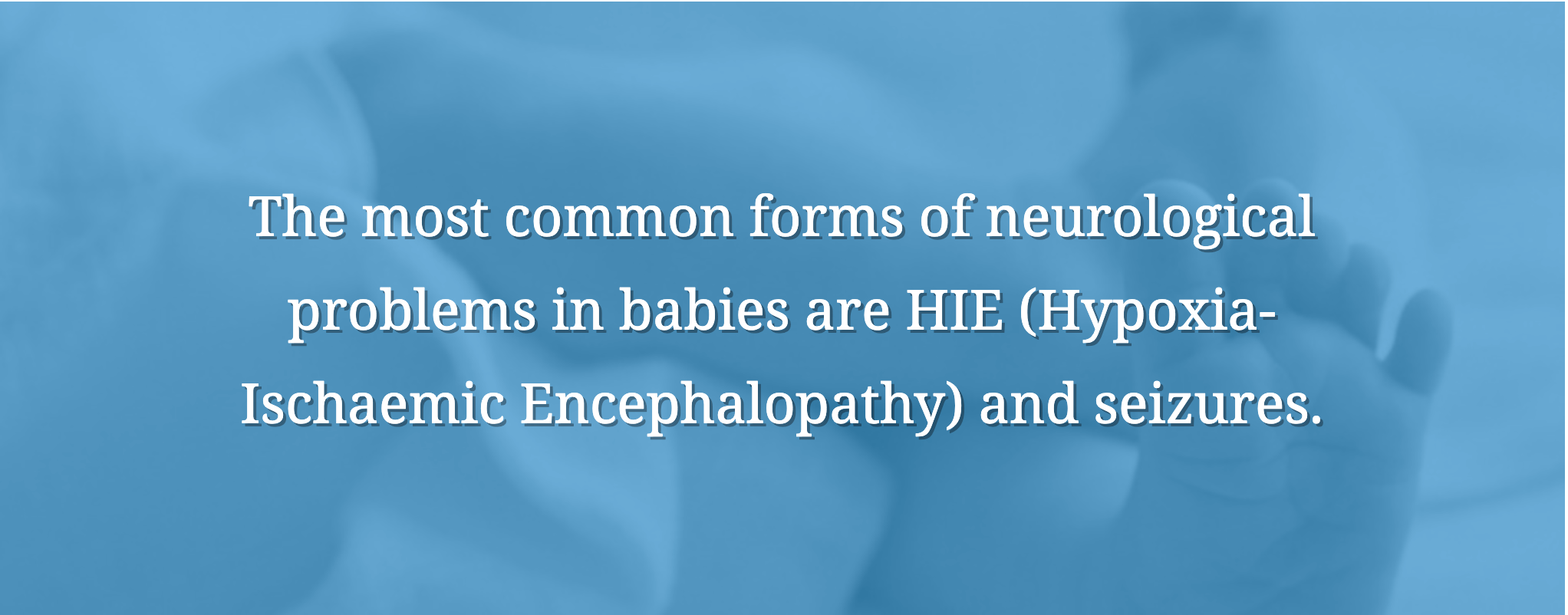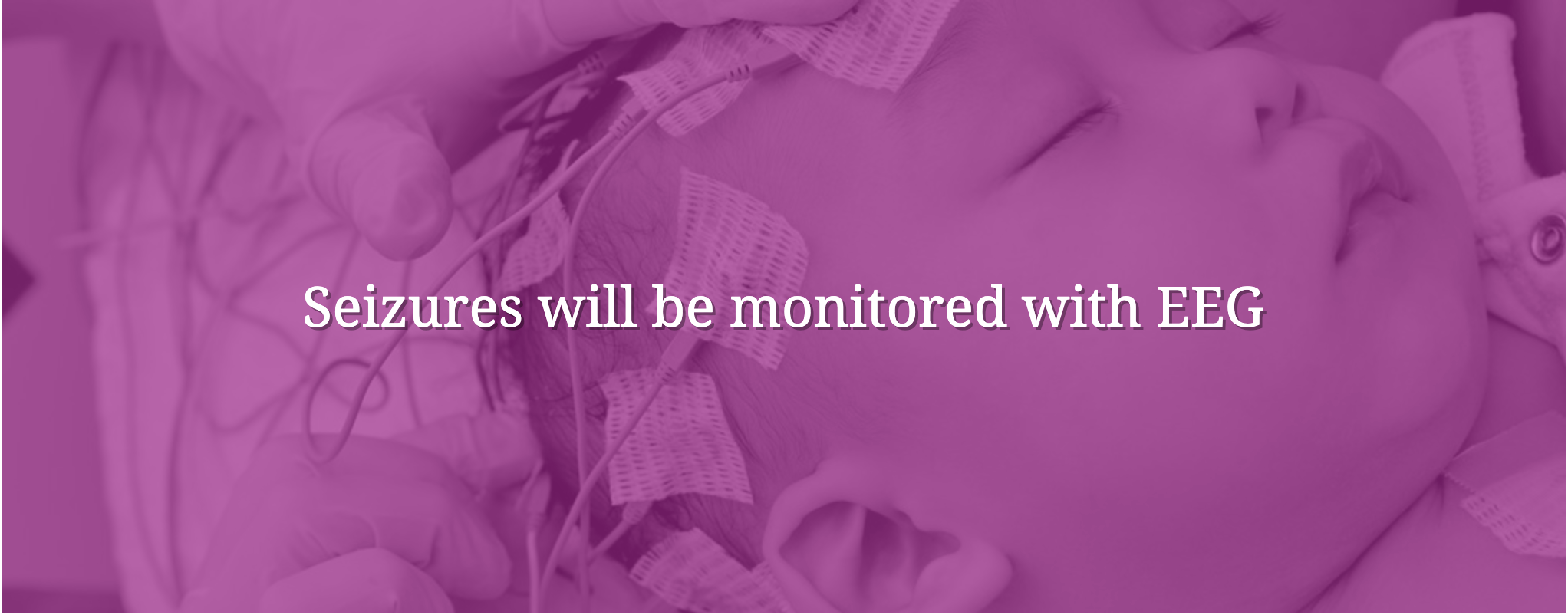Neurological Issues
Neurological problems in babies can occur for a variety of reasons: e.g. oxygen deprivation, jaundice, congenital reasons, premature birth, difficulties during labour, physical trauma suffered during labour or delivery and infection in the mother’s body
Brain injuries and neurological problems are diagnosed by MRI (magnetic resonance imaging) and CT (computed tomography) scans. These scans can also tell the team the extent of any injuries. EEG (electroencephalogram) monitoring can be used to measure the electrical activities of the brain.
If your baby has a brain injury, they may have an abnormal temperament or behaviour with the following symptoms:
- trouble sleeping when lying down
- excessive crying, often high-pitched
- feeding problems
- excessively ‘fussy’ for no apparent reason
The long-term effects of a neurological problem are dependent on its severity: how long trauma was experienced and what part(s) of the brain it has affected. Depending on the severity of the injury, your baby may experience:
- developmental delays, requiring speech/occupational and behavioural therapies
- epilepsy, requiring medication
- difficulties with physical mobility and flexibility
- psychological issues

Hypoxia-Ischaemic Encephalopathy
Hypoxic Ischemic Encephalopathy (HIE) is a type of brain injury that occurs when an infant’s brain doesn’t receive enough oxygen and blood.
Asphyxia, or oxygen deprivation, occurs when a baby is deprived of oxygen before, during, or after birth. Asphyxia is the most significant risk factor for Hypoxia-Ischaemic Encephalopathy (HIE). The body of a newborn baby can compensate for brief periods of depleted oxygen but if this reduction in oxygen lasts too long during birth, HIE occurs, damaging the brain tissue.
The resulting damage to the baby’s brain is dependent on the duration of oxygen deprivation and the part(s) of the brain that were deprived of oxygen. The prognosis of brain damage will worsen with more severe injuries and, in turn, will have a significant bearing on symptoms the baby experiences. If the baby experiences an injury that will have long-term consequences, the severity of impairment cannot be determined until the baby has reached three to four years of age. Although HIE occurs in preterm babies, it’s more common in term babies.
HIE can be treated, or its severity lessened, using therapeutic hypothermia or ‘cooling’ which involves cooling the baby’s core body temperature down from 37 °C to 32.5 °C and keeping it at 32.5 °C for 72 hours. This treatment has been shown to reduce the risk of long-term brain damage.
The cooling treatment is carried out by wrapping the baby in an electric cooling blanket in an open top incubator. The cooling of the baby’s core body temperature allows their brain to heal. All the baby’s vitals are monitored closely to ensure that they are within the normal ranges. After 72 hours at 32.5 °C, the baby is slowly warmed up, at 0.5 °C per hour, to normal body temperature (37 °C).
A follow-up MRI scan and EEG monitoring is carried out to identify areas of the brain that have been affected.
Despite major advances in monitoring technology and treatment for brain injury, the exact timing and underlying causes of HIE remain unknown.
Further Reading: Birth Injury Guide

Seizures
Seizures are a common neurological problem in babies. The severity of the seizure, and any long-term consequences will vary depending on the exact cause of the seizure.
Seizures are generally associated with jerky movements but not all seizures can be seen, and not all jerky movements are seizures. A specialised doctor called a paediatric neurologist is required to diagnose seizures.
The most common causes of seizures are:
- Haemorrhage: bleeding in the brain caused by the rupture of blood vessels in the brain. The severity of the haemorrhage depends on the amount of the brain affected by the bleed and the areas of the brain involved. An intraventricular haemorrhages (bleeding in the areas that produce cerebrospinal fluid) is a common form of haemorrhage experienced by babies.
- Cerebrovascular malformations: some malformations of certain parts of the brain can cause serious neurological problems.
- Hydrocephalus: the build-up of fluid inside the baby’s brain.
- Neural tube defects: this affects the spinal cord and brain, and leads to a variety of conditions such as Spina bifida.
- Periventricular leukomalacia: this is when the white tissue of the brain is damaged or dies. This is generally associated with premature births, difficult births, or infection in the womb.
How are seizures diagnosed?
Neurologists use a number of procedures to diagnose the occurrence of a seizure. One method is called EEG (electroencephalography). This measures the electrical activities of the brain and allows the doctor to identify seizure activity, and possibly the origin of that activity. If your baby is EEG monitored, a number of electrode/wires will be attached to different areas of their scalp. The trace (or recording) from each electrode corresponds to a different area of the brain. This procedure is safe and painless to your baby.
A combination of EEG monitoring and video surveillance/observation is now considered the best method to identify a seizure. This ‘gold standard’ approach is used in the neonatal unit of Cork University Maternity Hospital.
Although what defines a normal/abnormal pattern of brain electrical activity in the newborn is becoming more clear, some areas of uncertainty still exist. This is why specially trained paediatric neurologists are required to interpret newborn EEG electrical trace patterns. On-going research in this area has led to the development of computerised programs that can interpret the recordings of the EEG with the aim to have early and accurate identification of the occurrence of seizures.
How are seizures treated?
There are a number of procedures that will be carried out, along with EEG, to confirm the presence of seizures. The results from these procedures will be pieced together to identify the baby’s condition. In addition to EEG, your baby may undergo:
- clinical examinations (observation)
- pathological investigations, e.g., blood tests and a lumbar puncture; and cranial ultrasound.
The results from these tests sometimes reveal the need to start antibiotics and/or, start treatment that will correct metabolic instabilities. During these treatments, EEG monitoring will continue to determine if these treatments have reduced or eliminated the seizures.
Once your baby’s condition has been identified, anticonvulsants are used to control seizures. Commonly used anticonvulsants are phenobarbital, phenytoin, clonazepam, paraldehyde, and Keppra. Once treatment begins, EGG and observation may be continued to determine your baby’s progress.
When your baby is stable, they will be re-assessed after one month of treatment. Phenobarbital is usually stopped after two months and a decision to carry out magnetic resonance imaging (MRI) is made by the consultant in charge.
Further Reading: Continuous long-term EEG

